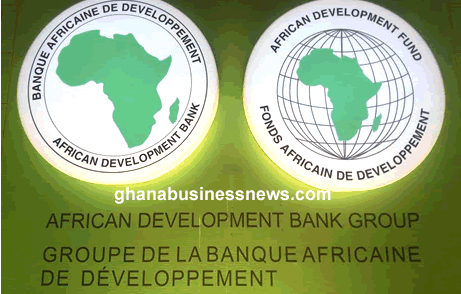AfDB projects Ghana economic growth at 8.5% in 2018
 A number of projections of economic growth for Ghana in 2018 have all suggested growth above 8 per cent following a 3.5 per cent growth in 2016, which was also the lowest in about two decades.
A number of projections of economic growth for Ghana in 2018 have all suggested growth above 8 per cent following a 3.5 per cent growth in 2016, which was also the lowest in about two decades.
The African Development Bank (AfDB) in its African Economic Outlook 2018 released Wednesday January 17, 2018 in Abidjan, Ivory Coast, projects economic growth of 8.5 per cent for Ghana.
The Bank, notes that economic growth fell from 14 per cent in 2011 at the onset of oil production, to 3.5 per cent in 2016, the lowest in two decades.
“The economy recovered in 2017, growing at an estimated 6.3 per cent, spurred by recovery in non-oil sectors, lower inflation, and new hydrocarbon wells (the Tweneboa, Enyenra, Ntomme, and Sankofa oil and gas fields). Over the medium term, economic growth is expected to accelerate to 8.5 per cent in 2018 and then moderate at 6.2 per cent in 2019 as the budget and current account deficits narrow amid lower inflation and falling interest rates,” it said.
According to the Outlook, weak economic growth squeezed by tight monetary policy and lower oil production in 2016 have led to a decline in government revenues., however, budget performance is expected to improve after the budget deficit drop from 8.9 per cent of GDP in 2016 to 4.7 per cent in 2017.
In the AfDB’s estimation, higher oil production and tightly controlled expenditures are likely to boost revenues, adding that improvements in tax collection and falling inflation and interest rates will facilitate economic activity.
“Revenue mobilization and efficiency measures will continue to be key factors in budget implementation. Inflation continued to gradually drop from a peak of 19.2 per cent in January 2016 to 12.2 per cent in September 2017,” it said.
The AfDB acknowledged that the Bank of Ghana reduced its policy rate from 25.5 per cent to 21 per cent, the fourth consecutive cut since November 2016.
It further noted that exchange rates remained stable compared with 2014 and 2015, with a cumulative yearly depreciation of 4.7 per cent against the US dollar as of August 2017.
It however, indicated that Ghana is at a high risk of debt distress as the debt-to-GDP ratio remains high at 73.3 per cent in December 2016, down from 68 per cent in June 2017. Debt sustainability remains a priority for the government’s fiscal consolidation programme, it added.
According to the Outlook, for many African countries, growth in real output recovered in 2017, noting that many African economies are better placed to cope with harsh external conditions than they were in the past two decades.
“Global conditions have eased slightly since mid-2016, improving the outlook for Africa, but countries in the region still face major macroeconomic challenges. Commodity prices have recovered but not to pre-crisis levels, and demand for traditional and nontraditional exports from Africa remains modest,” it says.
While it acknowledges that current account positions have improved, it points out that they are not sufficiently robust as dollar interest rates are expected to edge up, bidding up the cost of capital; and external debt ratios have begun to rise across the region.
Raising concern about infrastructure investment in Africa, which is financed largely by external borrowing, it calls for careful monitoring to ensure that revenue streams (generated in local currencies) are strong enough to meet the debt obligations when they fall due.
It also noted that fiscal policy should not undercut the growth-promoting effects of the recent surge in public investment and reverse the inroads made in poverty reduction, health, and education across the continent.
“In the short term, macroeconomic policy must blend real exchange rate flexibility and judicious demand management. Real exchange rate depreciations will be important, but given the strengthening of the US dollar, competitive currency depreciations may not necessarily translate into a strong price advantage in export markets,” it said.
Among others, the Outlook states that domestic demand management may have to bear a larger share of the burden in restoring external balance, adding that ongoing infrastructure projects will need to be completed and maintained, and projects in the pipeline balanced against other needs.
By Emmanuel K. Dogbevi
Copyright ©2018 by Creative Imaginations Publicity
All rights reserved. This news item or any portion thereof may not be reproduced or used in any manner whatsoever without the express written permission of the publisher except for the use of brief quotations in reviews.
